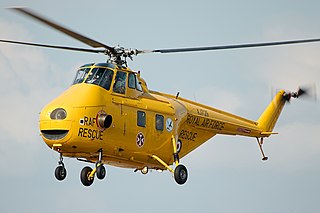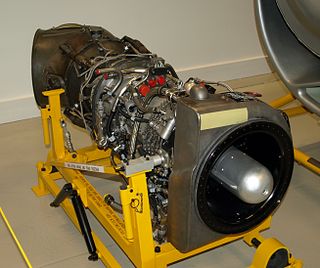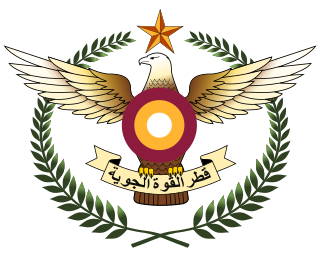
The Westland Whirlwind was a British twin-engined heavy fighter developed by Westland Aircraft. A contemporary of the Supermarine Spitfire and Hawker Hurricane, it was the first single-seat, twin-engined, cannon-armed fighter of the Royal Air Force.
Westland Aircraft was a British aircraft manufacturer located in Yeovil, Somerset. Formed as a separate company by separation from Petters Limited just before the start of the World War II, Westland had been building aircraft since 1915. During the war the company produced a number of generally unsuccessful designs, but their Lysander would serve as an important liaison aircraft with the Royal Air Force. After the war the company focused on helicopters, and was merged with several other British firms to create Westland Helicopters in 1961.
Westland Helicopters was a British aerospace company. Originally Westland Aircraft, the company focused on helicopters after the Second World War. It was amalgamated with several other British firms in 1960 and 1961. In 2000, it merged with Italian helicopter manufacturer Agusta to form AgustaWestland, which in turn merged into Leonardo-Finmeccanica in 2016.

The Westland Welkin was a British twin-engine heavy fighter from the Westland Aircraft Company, designed to fight at extremely high altitudes, in the stratosphere; the word welkin meaning "the vault of heaven" or the upper atmosphere. First conceived in 1940, the plane was built in response to the arrival of modified Junkers Ju 86P bombers flying reconnaissance missions that suggested the Luftwaffe might attempt to re-open the bombing of England from high altitude. Construction was from 1942–43. The threat never materialised; consequently, Westland produced only a small number of Welkins and few of these flew.

The Westland Whirlwind helicopter was a British licence-built version of the U.S. Sikorsky S-55/H-19 Chickasaw. It primarily served with the Royal Navy's Fleet Air Arm in anti-submarine and search and rescue roles.
A whirlwind is any kind of vertical wind vortex.

The Helicopter Museum in Weston-super-Mare, North Somerset, England, is a museum featuring a collection of more than 80 helicopters and autogyros from around the world, both civilian and military. It is based on the south-eastern corner of the former Weston-super-Mare Airport.

The Rolls-Royce Gnome is a British turboshaft engine originally developed by the de Havilland Engine Company as a licence-built General Electric T58, an American mid-1950s design. The Gnome came to Rolls-Royce after their takeover of Bristol Siddeley in 1968, Bristol having absorbed de Havilland Engines Limited in 1961.

The Qatar Emiri Air Force is the air arm of the armed forces of the Persian Gulf state of Qatar.

700 Naval Air Squadron is an experimental test squadron in the Royal Navy’s Fleet Air Arm.

The Fleet Air Arm Museum is devoted to the history of British naval aviation. It has an extensive collection of military and civilian aircraft, aero engines, models of aircraft and Royal Navy ships, and paintings and drawings related to naval aviation. It is located on RNAS Yeovilton airfield, and the museum has viewing areas where visitors can watch military aircraft take off and land. It is located 7 miles (11 km) north of Yeovil, and 40 miles (64 km) south of Bristol.
846 Naval Air Squadron is a squadron of the Royal Navy's Fleet Air Arm.

815 Naval Air Squadron is a squadron of the Fleet Air Arm, part of the Royal Navy, based at RNAS Yeovilton in Somerset; it is the Navy's front line Wildcat Naval Air Squadron. It comprises AgustaWestland Wildcat HMA.2 helicopters and is the largest helicopter squadron in western Europe.
No. 225 Squadron RAF is a former Royal Air Force squadron.

705 Naval Air Squadron was first formed as a flight in 1936 from No 447 Flight Royal Air Force and operated Swordfish torpedo bombers from battlecruisers. It achieved squadron status in 1939 before being disbanded in 1940. The squadron was re-formed briefly in 1945 and then again in 1947 as a fleet requirements unit to evaluate naval use of helicopters. Since the 1950s the squadron has been involved in the basic training of helicopter aircrew, and currently forms part of the Defence Helicopter Flying School at RAF Shawbury.

The Royal Air Force Search and Rescue Force was the Royal Air Force organisation which provided around-the-clock aeronautical search and rescue cover in the United Kingdom, Cyprus and the Falkland Islands.

824 Naval Air Squadron is a Royal Navy Fleet Air Arm squadron first formed on 3 April 1933, disbanding and reforming several times before assuming its current role at RNAS Culdrose as a training squadron.
Harald Penrose, O.B.E, CEng, F.R.Ae.S, A.M.I.N.A was the chief test pilot at Westland Aircraft Ltd between 1931 and 1953, a naval architect, and an aviation author. His flying experience ranged from man carrying kites before the First World War to early jet fighters and helicopters. He designed, built and flew his own glider in the 1930s, designed 36 boats and yachts, and wrote many books describing his flying career and the history of British aviation.

706 Naval Air Squadron was a Naval Air Squadron of the Royal Navy's Fleet Air Arm. Established as a fighter and torpedo-bomber training unit in Australia at the end of World War Two, it was briefly reformed as a helicopter squadron in the early 1950s, before becoming a helicopter training unit in 1962, and operating until 1998.

No. 1563 Flight RAF was an independent flight of the British Royal Air Force (RAF). 1563 flt operated Westland Puma HC.1 helicopters on tactical support missions for locally garrisoned British Army units, as well as Belize Defence Force units in Belize, from 1975 to around 1993. Previously 1563 Flt was stationed at RAF Akrotiri flying Westland Whirlwind HAR.10 helicopters on support missions for locally garrisoned British Army and United Nations troops.













